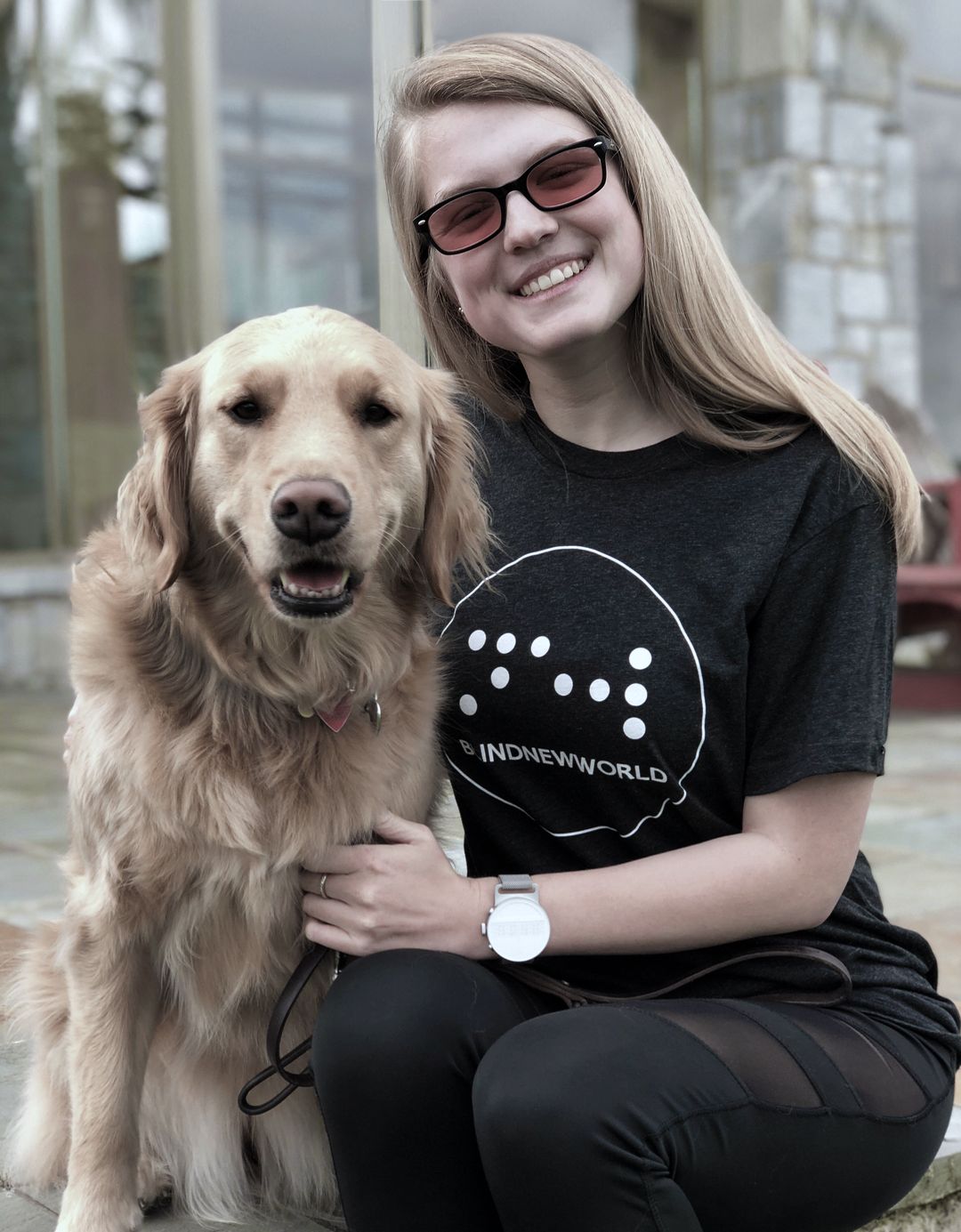PR/IR
News
News
Blog
- Date
- 2020.08.11 11:01
Now consider this, how many people do you suppose have family and friends who are blind? If we assume that one VIP belongs to a family of four, then the number already tops 1.2 billion. If we include friends and relatives, then the number will be even higher. Here at DOT, we envision parents and children learning braille together with a braille smartwatch on their wrists.
“Mommy is wearing the same watch as you. We’re reading time together, in the same way.”
This is not a watch that reads time out loud, for everyone to hear, but a watch that gives you privacy. A watch that allows you to read the time silently like everyone else. It is the little details, like this, that we care about. Understanding can be a powerful tool that gives a deeper sense of stability and security to children. We want the best for children, and for them to enjoy the finest quality of life.
There are two letters I’d like to share today written by our wonderful Dot Beta testers. A daughter and her blind father tell their story, in addition, a mother and her beloved son share their special memories with us.
Luke wasn’t able to use the Dot Watch full-time immediately but has recently learned to do so. He has been wearing it full-time for 3 or 4 days now and is continuing to do so to provide adequate feedback. He’s writing up his thoughts for me to forward to you. So I won’t go into detail right now. However, I will say that the longer he wears it, the more he enjoys it! I notice him checking it for incoming text messages throughout the day (whereas he typically has to use Voice Over on his phone to know who is texting, which can be inconvenient audibly when in a group or conversation). Also, he preached yesterday morning and found that the Dot Watch was more convenient than his regular watch. (He normally wears a Bradley watch by eOne with magnetic ball bearing to designate the time, but after he feels the time the balls on the watch move so he has to shake/lift his arm to reset the magnetism. Typically, this is no big deal, but it is inconvenient and conspicuous when giving a presentation!).
We attended a social event Saturday with about 50-60 people, and he had many questions from his friends (and some adults) about the watch. They wanted to know how it works, what it can do, etc. They were all very complimentary, and very surprised at how convenient it is for him and how it facilitates more discreet independence for his daily activities. He was very proud to show it to others and talk about it. He has tested out many of the different features, and I’m surprised at how quickly he has learned to navigate it while utilizing so many of the features; from simple time telling, to the timer/stopwatch, as well as scrolling texts, etc.
Again, I’ll let him take some more time to experience it and write up his thoughts, but everything is going super well with it and the watch is getting a lot of love from him! I wanted to emphasize that the longer Luke wears the watch the more he’s coming to understand the intentions behind the design. He’s made comments like,
“Now I understand why they created this feature this way” OR
“The way these particular function works makes more sense now.”
It’s been interesting to hear him thinking out loud about the watch and his responses to it. Of course, from my perspective, I love seeing him interact with it, knowing that this is yet another link to personal dignity, confidence, and independence. What an inspiration to my heart to witness that!

My father developed glaucoma and became completely blind due to its effects. Dad and I were always interested in braille watches, and perhaps that explains how around last year we discovered Dot Watch. We were excited to send in our applications when Dot announced its beta testing plans, and luckily, we were selected to experience the Dot Watch before it hit the market.
The design was more than I expected and in addition, it was light too. I was absolutely satisfied. Not to mention the people I met there, their nice demeanor really speaks to Dot’s image. As I listened to the instructions for the Dot Watch, I concluded that it would be a more worthwhile venture to learn braille than to use ‘tactile mode,’ in order to make better use of the product. So, on my way out of the building, I visited an office where they provide consulting on braille education. At the braille education office, a teacher told me it would be rather difficult to learn braille.
For Dad, it would be hard because he lost sight at an older age – as, for myself, it turns out that learning braille is even more challenging to people with low vision. But I didn’t lose hope. When I told the teacher that I wanted to master the numbers 1 to 10 she willingly hand-marked the braille numbers 1 to 12 and I’m very grateful for that. The spacing between the dots on the braille board was a bit smaller than the Dot Watch spacing so I had a hard time getting used to it, but in no time. I was able to read numbers, albeit poorly. To be fair, it’s still faster to read by looking when I’m in a rush. Learning braille is difficult after all.
Back home, we opened the package together. The band strap was a bit tight on Dad, but it fit quite comfortably on me. It would be nice if we can punch more holes on the strap or if there is a wider variety of band sizes. Another surprise was the instructions– it was simple! Without getting lost, I easily navigated through each function and was able to operate the Dot Watch in no time. But for Dad, it took him a while to get the hang of it. The stopwatch and timer function were good. Obviously, this is available in our everyday smartphones but for my dad who is deaf-blind, it was a completely new feature. He loved it.
As for me, the Dot Watch was a useful tool to learn braille on. Easy-peasy to learn numbers. Between tactile mode and braille mode, it’s better to learn braille because you’d have to count each of the dots in the tactile mode, which is just plain tedious. I admit it’s possible to grab a sense of the time by the general shape of the dots but to me, braille mode is so much more comfortable. To be honest, in order to use many of the functions of the Dot Watch, you need to know braille. This was a bit disappointing.
My dad still comes to me with an important message and asks me what it is. Of course, it would be difficult to learn braille entirely but it would be great if – at least –numbers, weather, greetings, and general information could be written down in the manual for people who don’t read braille, so that they can use this opportunity to learn and make better use of the Dot Watch.
Throughout the beta test, I was able to have more conversations with my dad and I loved it. I’m also very proud and glad to see this kind of technology. I hope that many people will use the Dot Watch and that it will be loved by a lot of people.
I’ll always be rooting for Dot in my heart.


 Prev
Prev
 Next
Next









